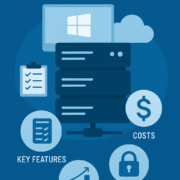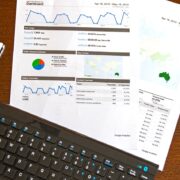Leveraging SEO Analytics for Digital Marketing Success
Table of Contents
Achieving higher search engine rankings takes weeks, months, and sometimes even years! To improve your success rate, you must find a way to determine what’s working and what isn’t.
That’s where SEO analytics comes in.
SEO analytics can uncover valuable insights into your website’s performance, resulting in time and cost savings. By looking at data, you’ll know which of your efforts are paying off and what you could do better.
Here’s everything you need to to get started with SEO analytics.
What Is SEO Analytics?
SEO analytics is a research method used to collect and analyze website data. It focuses on specific key performance indicators (KPIs) and metrics, such as:
- Organic traffic
- Click-through rate (CTR)
- Bounce rate
- Page views
- Session duration
- Keyword rankings
- Traffic sources
- Organic conversions
- Impressions
- Backlinks
- Page load time
Let’s say you launch a new blog and publish 10-15 posts. SEO analytics can help you identify your top-performing pages and organic traffic sources.
You’ll also see which keywords bring the most traffic, how much time visitors spend on each page, and what they click on. With these insights, you can fine-tune your content strategy to boost traffic and engagement.
Why Focus on SEO Analytics?
Having a great website design and publishing quality content isn’t quite enough to get results anymore. When it comes to SEO, it’s the small details that matter.
For example, slow-loading pages can hurt the user experience—and your SEO efforts. Technical issues, such as missing alt tags, broken links, or duplicate content, can affect your search engine rankings, too.
With SEO analytics, you’ll detect these technical issues early on. For instance, Google Search Console (GSC) and Google Analytics can detect broken links on your site so you can update or remove them.
Zoning in on deep SEO analytics can also help clarify buyer intent data, or prospects’ level of interest in your products or services. You can look at keywords used by your visitors. Or the actions they took on your site, such as filling out a form or watching a demo video.
Analytics data can give you a better understanding of customers’ needs and pain points. You’ll know which topics they’re interested in, what products they like most, and how they interact with your website.
Take heatmaps, for example. These analytics tools track user behavior on web pages in real-time, so you can see exactly how visitors engage with your content. After that, all you have to do to improve SEO is take the steps needed to improve your website layout, navigation, copy, and other essential elements.
Last but not least, you can leverage analytics data to monitor your competitors’ SEO performance. See how you measure up against them, what they do well, where they fall short, and where you can swoop in to fill the void.
How to Use SEO Analytics for Marketing Success
Getting started with SEO analytics doesn’t have to be difficult. First, determine what you want to measure and improve on. After that, choose the right tools for the job and make the necessary settings.
Once these steps are completed, review your data—and act on it. Continue to track your progress and seek areas for improvement. Later, you can set new goals and redefine your KPIs as your business needs change.
Ready to give it a try? Allow us to break down each step to using SEO analytics for marketing success.
Set Goals and KPIs
Determine what you want to know about website performance, competitors, or target audience.
Perhaps you don’t understand why customers leave your site after just a few seconds. Or maybe you’re looking to improve your content strategy and drive more traffic.
With that in mind, set relevant goals and KPIs.
Let’s say you want to increase user engagement on your site. In this case, track the following KPIs:
- Pageviews
- Pages per session
- Average session duration
- Scroll depth
- Bounce rate
- Click-through rate
- Conversion/churn rates
- Top exit pages
For example, scroll depth shows how far visitors scroll down a page. If they read only the first few lines, you may need to rework your headlines, lead images, or intros. A/B testing can help with that.
You can A/B test two versions of a web page, a CTA button, or other elements to see which one performs better. Returning to the above example, you can compare two versions of a page—each with a different headline, lead image, or introductory paragraph.
Change no more than one element at a time, measure the results, and pick the winning version. Or you can conduct further tests by modifying other elements.
Now that you want what you want to measure, it’s time to build your tech stack.
Choose the Right Analytics Tools
Depending on your budget, you can use free or paid SEO analytics tools. Each app or software program in this category has distinct features and capabilities.
For starters, register with Google Analytics 4 (GA4) and Search Console. Both tools are free and require adding a piece of code to your site.
GSC focuses on website performance and technical data. GA4 delves deeper into user data, such as demographics and engagement levels. When used together, they’ll give you a complete picture of your SEO efforts.
Alternatively, use an all-in-one solution like Semrush, Ahrefs, or Hubspot. These have all the features of GA4 and GSC—plus other capabilities, including:
- Visual reports
- Advanced keyword analysis
- Competitive analysis
- SEO auditing tools
- Custom recommendations
These analytics tools are more intuitive (and often easier to use) than GA4 and GSC. The downside is that you may end up paying for features you don’t need.
Another option is to use GA4 and GSC along with specialized SEO tools like Hotjar, SpyFu, or Crazyegg. SpyFu can streamline competitor research, while Hotjar and Crazyegg generate website heatmaps.
Set up Your Dashboards
Configure each tool based on your needs. Most analytics tools enable users to track specific metrics and generate custom reports.
For example, Semrush allows you to visualize the results for different countries, regions, and devices.
So, if you’re targeting mobile users in the UK, you can see the data specific to this particular market. There’s also the option to generate reports for subdomains, such as your online shop or blog.
Similarly, Ahrefs features customizable dashboards where you can select what you want to see. If, say, you focus on link building, you can access the Backlinks section and generate reports that only cover this aspect.
Another option is to bring all your data into one place with Google’s Looker Studio or similar tools. Simply connect Looker Studio to your GA or GSC account (or other apps) to create customizable reports.
GA and GSC data can be difficult to interpret, especially for those who are new to web analytics. Plus, some insights may not be obvious, raising more questions than answers. Looker Studio can turn complex data into visual insights.
Collect, Analyze, and Act on Data
Web analytics tools provide a wealth of data you can use to create a winning SEO strategy, write better content, or drive sales. But first, it’s crucial to make sense of all that data.
Let’s say one of your competitors ranks on the first page of Google for a given keyword, or search term. The question is, what are you going to do with this information?
First, use Semrush, KWFinder, or Google’s Keyword Planner to check the search volume and ranking difficulty for that particular keyword. If it fits your content strategy and isn’t overly competitive, create a series of blog posts around it.
Use your target keyword in the page URL, title, first paragraph, at least one subheading, and throughout the content. Add secondary or related keywords where appropriate.
Go one step further and add your target keywords to your social media posts. Incorporate them into the copy, alt text, image titles, and hashtags. This strategy can make your content more discoverable in search results, leading to increased visibility and website traffic.
Meanwhile, leverage SEO analytics to monitor content performance and see how your rankings change over time.
Continuously Measure and Improve Your Strategy
SEO is an ongoing process that takes time to work. Sometimes, you have to wait months to see tangible results. That’s why it’s important to continuously measure and improve your strategy.
For example, software teams use a process called sprint planning to focus on the most impactful changes they can, then use data-driven insights to iterate on their work over time to meet and exceed KPIs. You can take a similar approach to SEO!
With an SEO sprint, you’ll set a specific goal, such as increasing website traffic by 50% within eight months. Then you’ll break down that goal into smaller steps and work in short sprints toward each milestone.
Review and discuss the results with your team at the end of each sprint cycle (this is called a sprint review). Use analytics data to monitor your progress and gain insights for future sprints.
This approach creates a sense of urgency, which can boost productivity and improve task management. At the same time, it allows for continuous feedback.
Unlock Actionable Insights with SEO Analytics
SEO analytics doesn’t directly impact website performance, user engagement, or sales.
Instead, it provides the data you need to make meaningful changes that can ultimately boost your marketing efforts. Basically, it guides you in the right direction by taking the guesswork out of search engine optimization. But it’s up to you to put that data to good use.
Use the tips above to get started with SEO analytics. Define your goals, set relevant KPIs, and build your tech stack accordingly. Review and act on data to ensure your website adheres to the best SEO practices and provides a seamless user experience.




